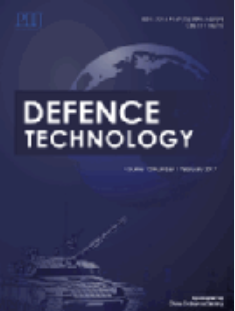A novel trajectories optimizing method for dynamic soaring based on deep reinforcement learning
IF 5.9
Q1 ENGINEERING, MULTIDISCIPLINARY
引用次数: 0
Abstract
Dynamic soaring, inspired by the wind-riding flight of birds such as albatrosses, is a biomimetic technique which leverages wind fields to enhance the endurance of unmanned aerial vehicles (UAVs). Achieving a precise soaring trajectory is crucial for maximizing energy efficiency during flight. Existing nonlinear programming methods are heavily dependent on the choice of initial values which is hard to determine. Therefore, this paper introduces a deep reinforcement learning method based on a differentially flat model for dynamic soaring trajectory planning and optimization. Initially, the gliding trajectory is parameterized using Fourier basis functions, achieving a flexible trajectory representation with a minimal number of hyperparameters. Subsequently, the trajectory optimization problem is formulated as a dynamic interactive process of Markov decision-making. The hyperparameters of the trajectory are optimized using the Proximal Policy Optimization (PPO2) algorithm from deep reinforcement learning (DRL), reducing the strong reliance on initial value settings in the optimization process. Finally, a comparison between the proposed method and the nonlinear programming method reveals that the trajectory generated by the proposed approach is smoother while meeting the same performance requirements. Specifically, the proposed method achieves a 34% reduction in maximum thrust, a 39.4% decrease in maximum thrust difference, and a 33% reduction in maximum airspeed difference.
基于深度强化学习的新型动态翱翔轨迹优化方法
受信天翁等鸟类乘风飞行的启发,动态翱翔是一种利用风场来增强无人驾驶飞行器(uav)续航能力的仿生技术。在飞行过程中,实现精确的飞行轨迹对于最大限度地提高能源效率至关重要。现有的非线性规划方法很大程度上依赖于初始值的选择,而初始值的选择很难确定。因此,本文提出了一种基于差分平面模型的深度强化学习方法,用于动态翱翔轨迹规划与优化。首先,使用傅立叶基函数对滑翔轨迹进行参数化,实现了具有最小超参数数量的灵活轨迹表示。随后,将轨迹优化问题表述为马尔可夫决策的动态交互过程。使用深度强化学习(DRL)中的近端策略优化(PPO2)算法对轨迹的超参数进行优化,减少了优化过程中对初始值设置的强烈依赖。最后,将所提方法与非线性规划方法进行了比较,结果表明所提方法在满足相同性能要求的情况下,生成的轨迹更加平滑。具体而言,该方法实现了最大推力减小34%,最大推力差减小39.4%,最大空速差减小33%。
本文章由计算机程序翻译,如有差异,请以英文原文为准。
求助全文
约1分钟内获得全文
求助全文
来源期刊

Defence Technology(防务技术)
Mechanical Engineering, Control and Systems Engineering, Industrial and Manufacturing Engineering
CiteScore
8.70
自引率
0.00%
发文量
728
审稿时长
25 days
期刊介绍:
Defence Technology, a peer reviewed journal, is published monthly and aims to become the best international academic exchange platform for the research related to defence technology. It publishes original research papers having direct bearing on defence, with a balanced coverage on analytical, experimental, numerical simulation and applied investigations. It covers various disciplines of science, technology and engineering.
 求助内容:
求助内容: 应助结果提醒方式:
应助结果提醒方式:


